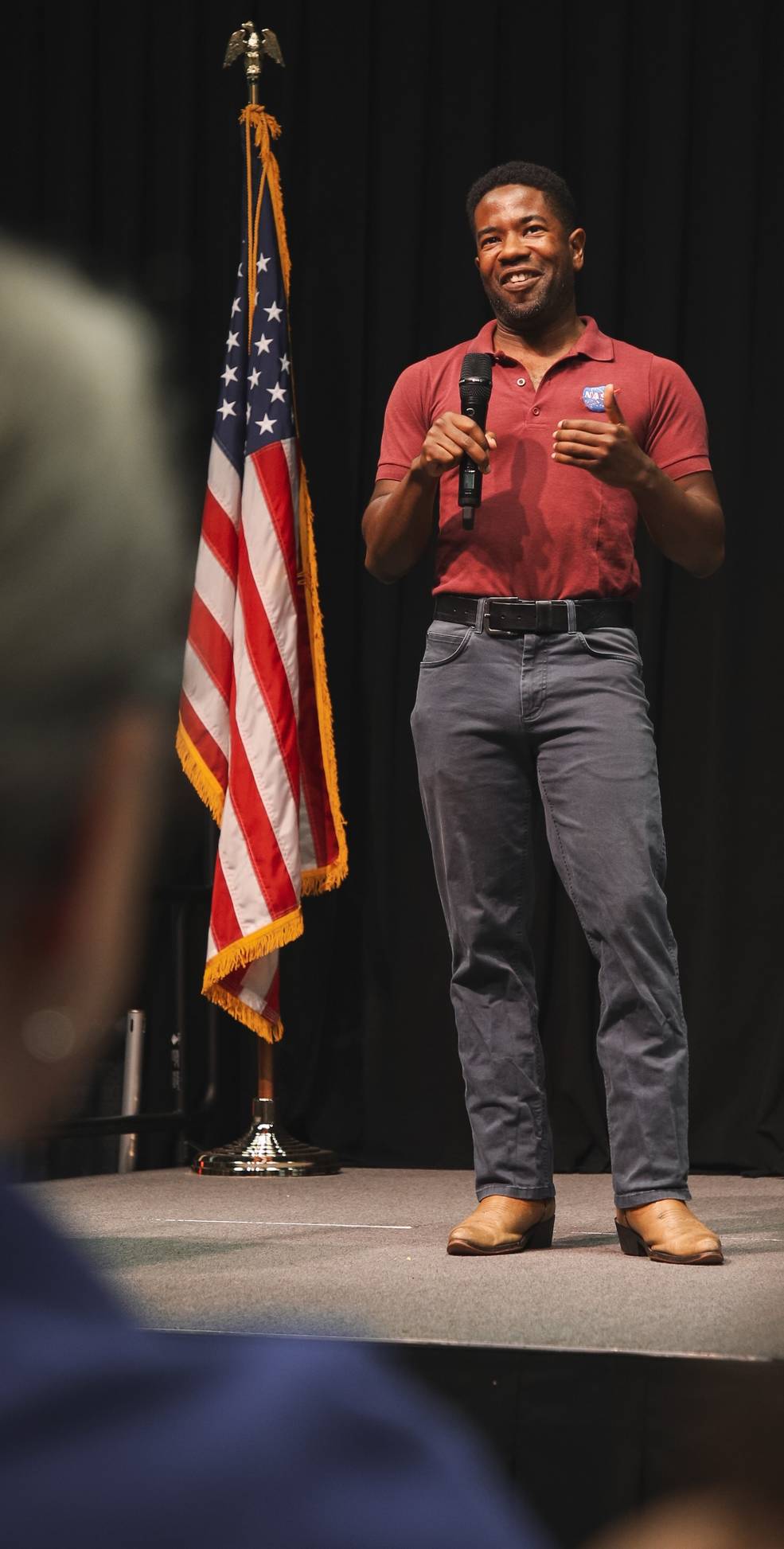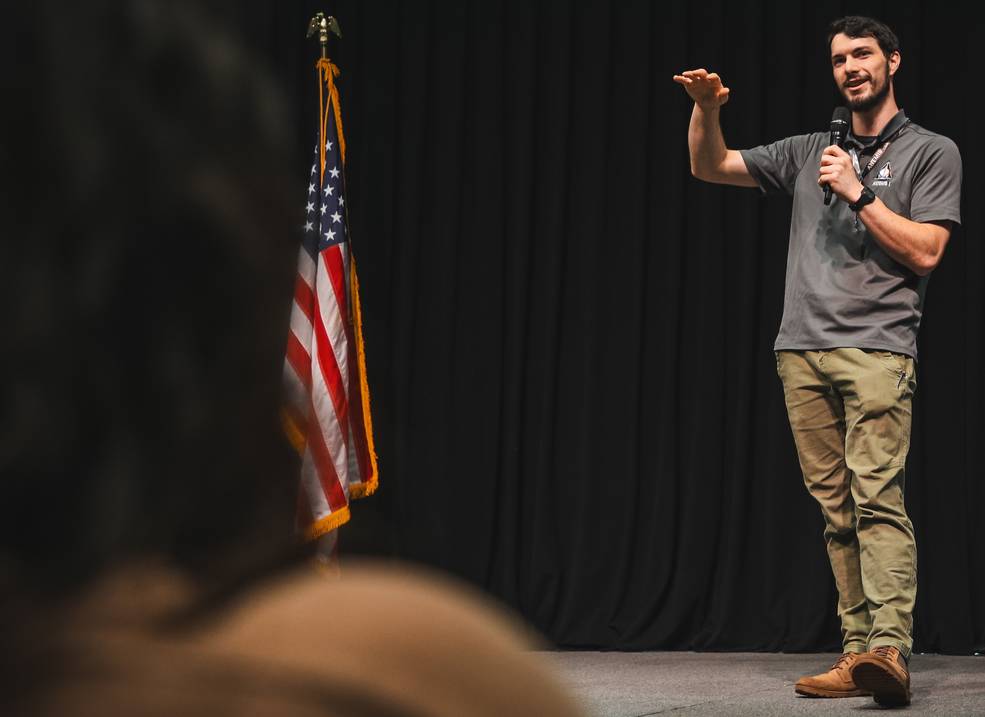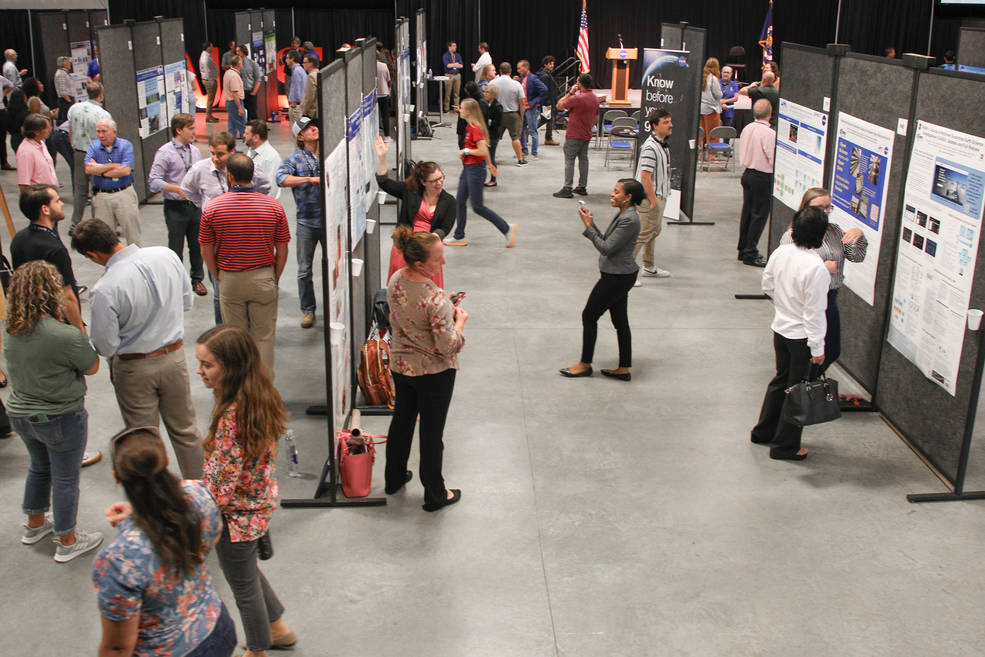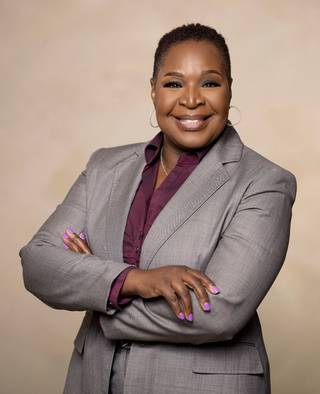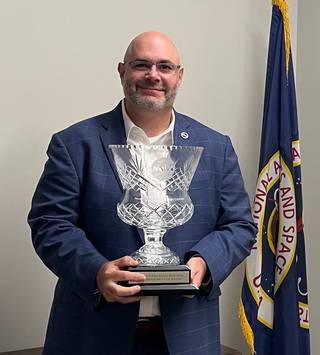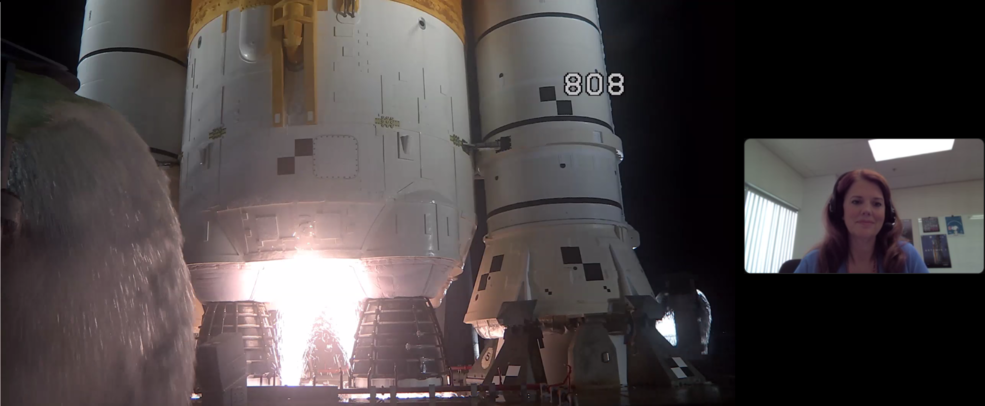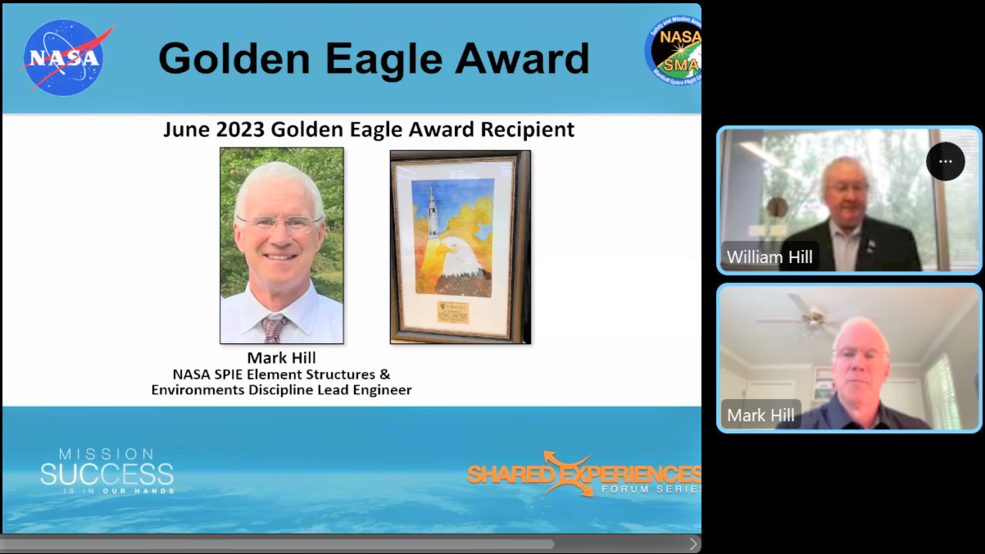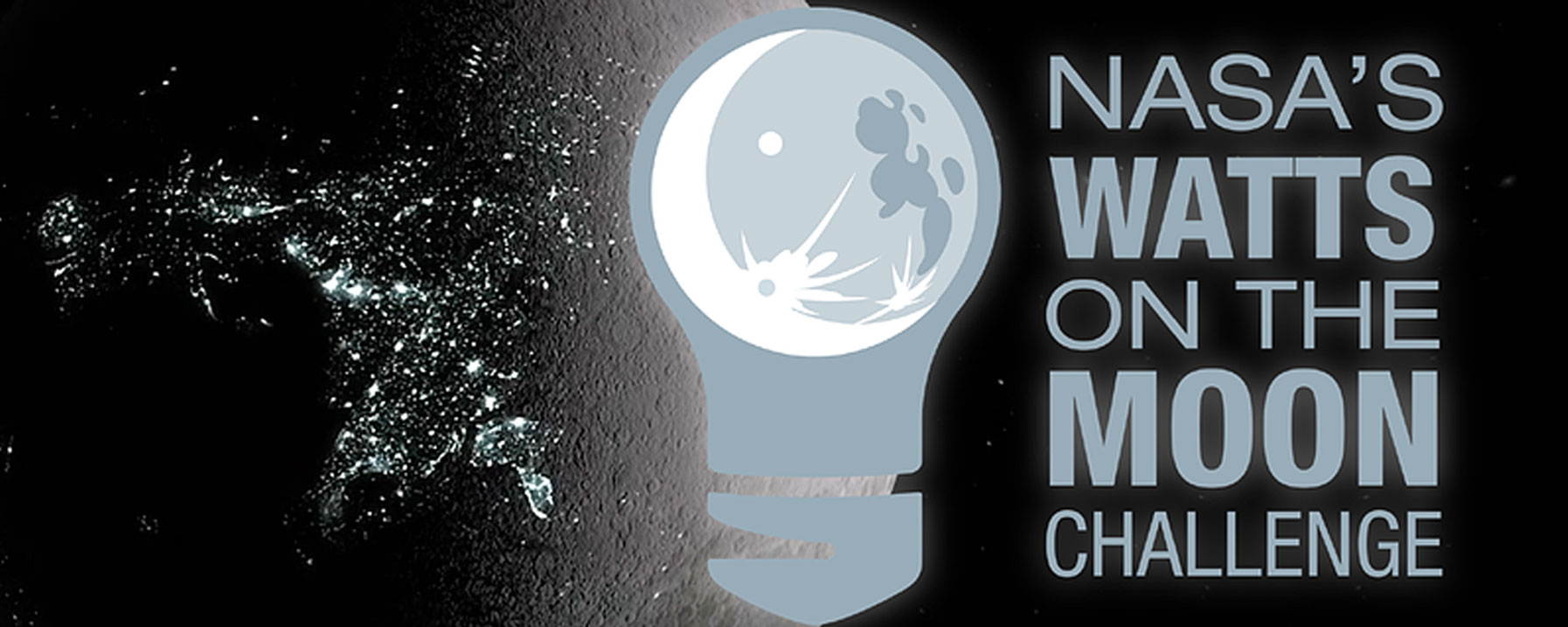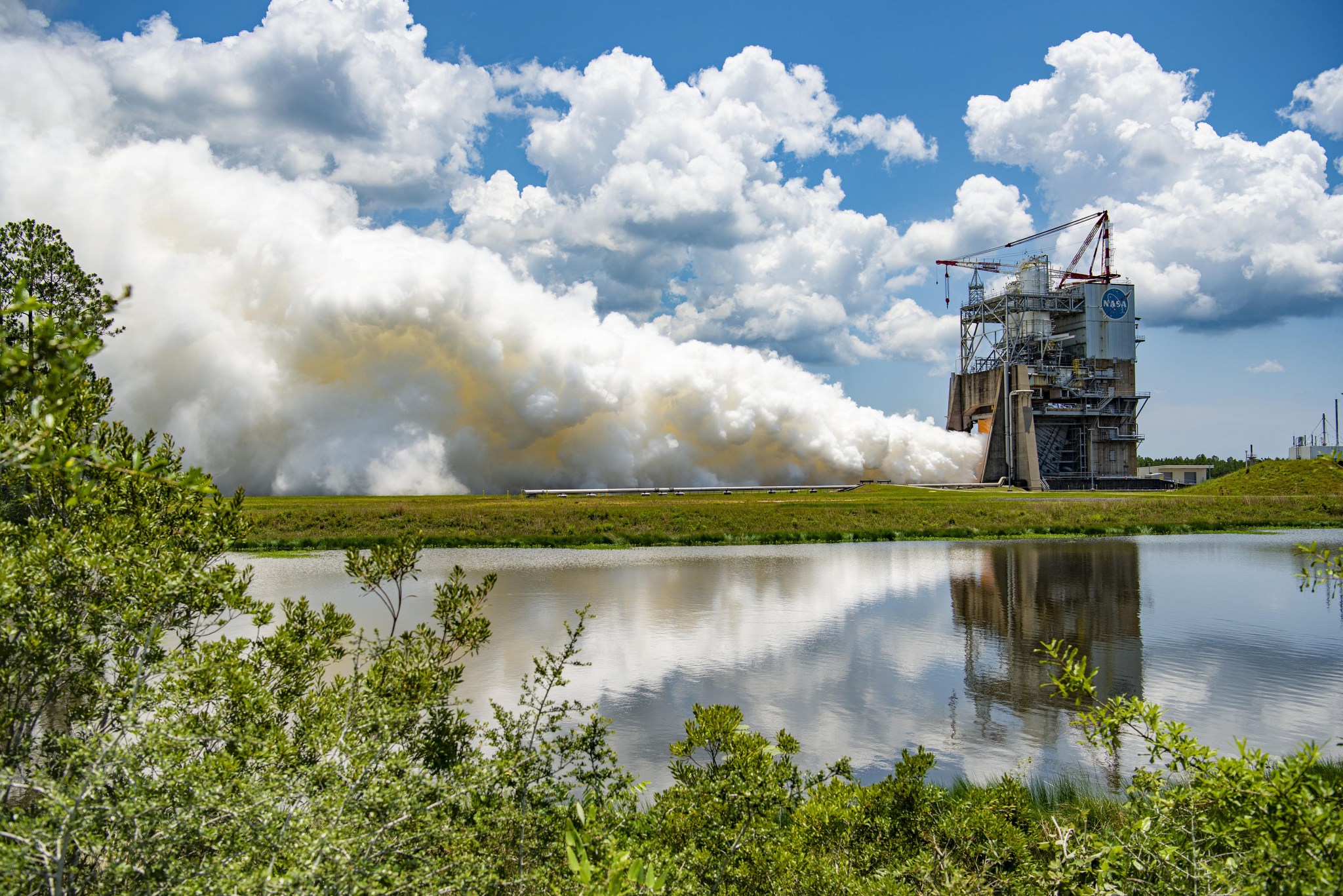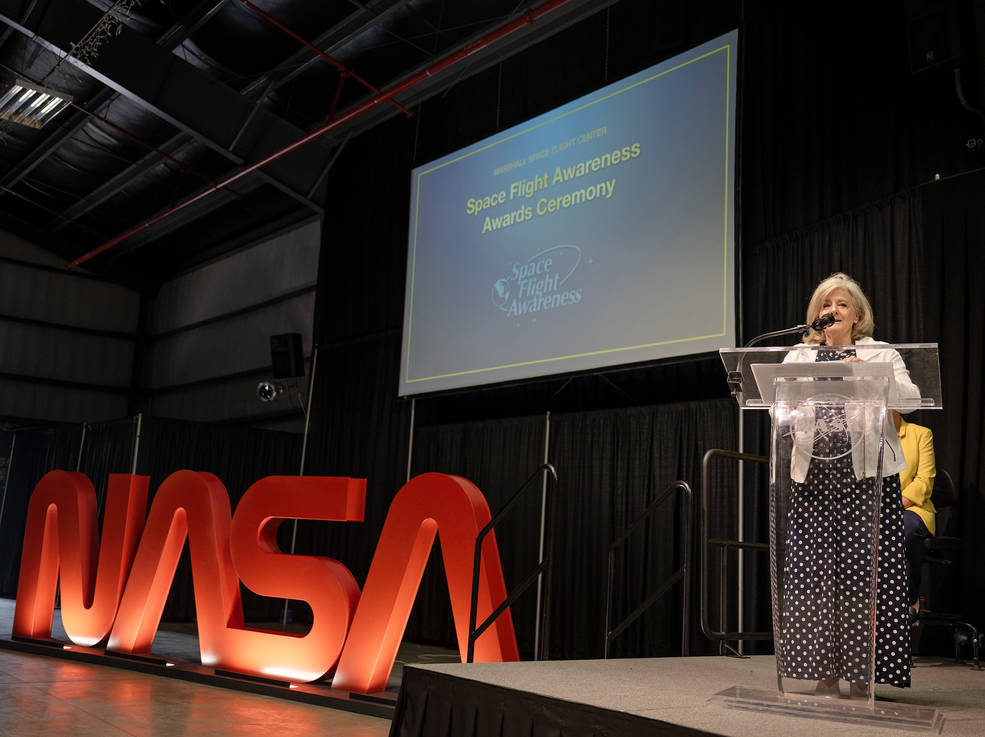The Marshall Star for June 28, 2023.
In This Week’s Star
- Marshall Scientists, Engineers Showcase Innovation at Jamboree, Poster Expo
- Take 5 with Tora Henry
- Marshall’s Small Business Office Wins NASA Administrator’s Cup Award for 7th Time
- Charlie Blackwell-Thompson Recalls Excitement of Artemis I Launch, Mark Hill Receives Golden Eagle Award
- Four Teams Win Prizes to Advance Energy Technology for Moon Missions
- NASA Achieves Key Milestone for Production of Future Artemis Engines
- Team Members Honored with Space Flight Awareness Awards
- NASA to Provide Coverage as Dragon Departs Station with Science
Marshall Scientists, Engineers Showcase Innovation at Jamboree, Poster Expo
By Eben Boothby
Projects underway at NASA’s Marshall Space Flight Center were showcased during the center’s annual Science, Technology, and Engineering Jamboree and Poster Expo on June 22 at Activities Building 4316.
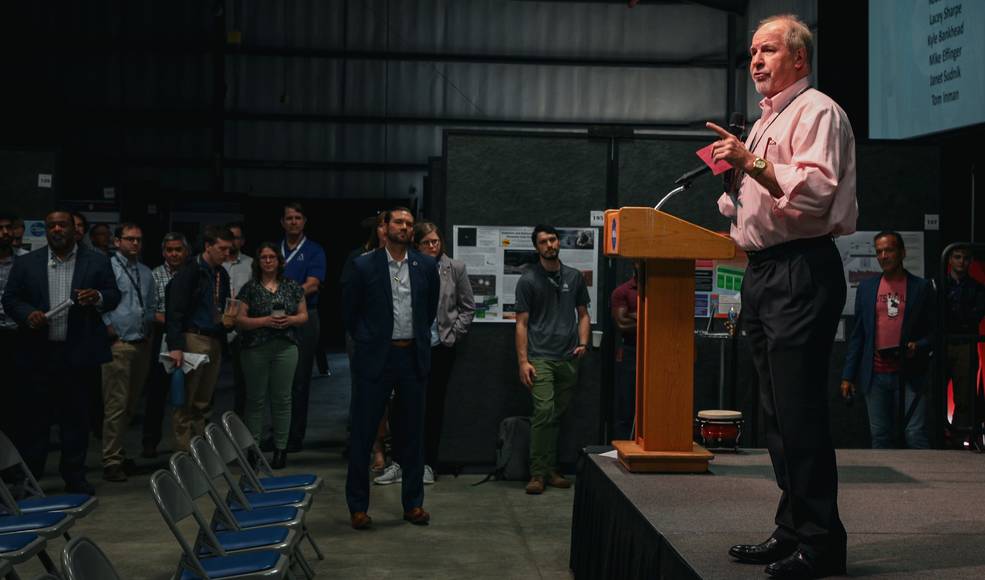
The event celebrated the intersection of NASA’s science, technology, engineering, and research endeavors at the center and some non-NASA participants from Redstone Arsenal. Co-hosted by Marshall’s Science & Technology Office and Engineering Directorate, the jamboree aimed to foster innovation and professional growth among its programs and project teams.
“The Science, Technology, and Engineering Jamboree was an excellent opportunity to explore various projects throughout Marshall and gain valuable insights,” said Robert Parker, technical assistant detailed to the center’s Engineering Directorate, and a key organizer for the event. “Building connections with diverse departments and fostering collaboration are significant aspects of this event. Furthermore, it is a fantastic networking opportunity for individuals to meet new people and expand their professional connections.”
The event featured more than 200 engineering, science, and technology projects. Approximately 1,000 attendees had the opportunity to discuss future work and network with colleagues from various disciplines, view poster presentations and displays, and hear flash talks by Marshall’s technologists, scientists, and engineers, covering a wide range of topics, from rocket plume analysis to breakthroughs in artificial intelligence.
Due to the pandemic, this was the first time the annual event took place in person since 2020. Inspiration for the expo originated 10 years ago as a flash talk-only social event for Marshall science and technology team members.
“We had a fantastic jamboree this year, with record high attendance and poster presenters,” said Tom Inman, associate manager of Marshall’s Science and Technology Office, and one of the jamboree organizers. “We expect many new connections were made that will spur collaboration, innovation, and new product development. Participants have a unique opportunity to network, and you never know what problem sets will spark an idea or solution for an application in the future.”
Boothby, a public affairs officer detailed from the U.S. Army Materiel Command (AMC), supports Marshall’s Office of Strategic Analysis & Communications.
Take 5 with Tora Henry
By Wayne Smith
When asked what has motivated her throughout a career spanning more than 33 years, Tora Henry is quick to point to the lessons instilled by her grandmother.
Henry, the director of the Office of Diversity and Equal Opportunity (ODEO) at NASA’s Marshall Space Flight Center, still reflects on those lessons in her current position.
“I am motivated by the desire to grow, learn, and be the change agent that my grandmother wanted me to be,” Henry said. “The world is not fair, and things don’t always go our way, so you have to love yourself when no one else does. My internal feelings of accomplishment, pride, and ownership are the driving force that allows me to be my best self even in the face of challenges and opposition. I never give up and I never settle for ‘no.’ There is always a way.”
As ODEO director, those traits are also something she shares in providing guidance to Marshall leaders and team members at all levels. What advice does she have for employees early in their NASA career or those in new leadership roles? “Work hard, learn your job, and be proficient, but don’t forget to take care of yourself and take care of your staff,” Henry said. “Work/life balance is very important and while we do great work for NASA, don’t forget your family and who you are outside of your jobs.”
Question: What are your primary responsibilities as ODEO director?
Henry: I’m responsible for managing the Diversity and EEO policies, plans, and program, with full authority to plan, organize, direct, staff, implement, and evaluate Diversity, Equity, Inclusion, and Accessibility (DEIA) and Equal Opportunity (EO) programs throughout Marshall Space Flight Center for NASA civil servants and contractors. In carrying out the ODEO mission, I provide policy oversight and technical guidance for DEIA, affirmative employment, special emphasis/outreach, disability/reasonable accommodations, and complaint processing programs.
Question: What excites you most about the future of human space exploration and your team’s role it?
Henry: What excites me is just another opportunity to see diversity in real time. Our job is to ensure that NASA continues to be an organization that embraces diversity and seeing women and minorities in space lets me know that we are moving the needle in the right direction.
Question: What has been the proudest moment of your career and why?
Henry: I don’t have one specific moment that stands out to me because every position I’ve held makes me proud to have had an opportunity to serve my country – as a Marine; supporting the Army as a civil servant; and even now supporting NASA’s mission. So many of my family members and even friends have not had the experiences that I’ve had over the past 33 years, and I am very thankful!
Question: Who or what inspired you to pursue an education/career that led you to NASA and Marshall?
Henry: I have had many leadership positions in my career, and I believed after 33 years of federal service, it was time to lead at a higher level to impact change. My mentors and close friends encouraged me to believe in myself as opportunity met face-to-face with preparation, and the time I had invested in learning my craft and taking care of people paid off.
Question: What do you enjoy doing with your time while away from work?
I am a licensed Zumba instructor, so dancing is my happy place, along with physical fitness, hiking, and finding new waterfalls.
Smith, a Media Fusion employee and the Marshall Star editor, supports Marshall’s Office of Strategic Analysis & Communications.
Marshall’s Small Business Office Wins NASA Administrator’s Cup Award for 7th Time
By Jessica Barnett
Communication, sharing, and working together are key ingredients in most partnerships, and that includes NASA’s partnerships with small businesses. At NASA’s Marshall Space Flight Center, a team of individuals work each day to foster and support these relationships through the center’s Small Business Office.
This dedication and effort during fiscal year 2022 earned them recognition at the agency level, with team members winning Small Business Advocates Awards, a Small Business Industry Award, and the Small Business Administrator’s Cup. It’s the seventh time Marshall has won the Cup, which honors a center’s significant contributions to NASA’s small business program and recognizes the successful, innovative practices used to promote small business participation in NASA initiatives.
“It was a big win,” said David Brock, who serves as Marshall’s small business specialist and manages NASA’s Mentor-Protégé Program. “A lot of that is attributed to the team we have. It’s all about the program, and it’s all about the team. That’s what makes us strong. We have a team that’s focused on promoting the program across all of Marshall.”
Brock said the SBO accomplishes this through robust outreach and in-reach efforts, frequently interacting with industries and companies, and maximizing the opportunities available for all involved. During FY22, this included adding quarterly joint counseling sessions for historically Black colleges and universities (HBCUs) and minority-serving institutions, as well as hosting partnership and alliance meetings to share information and help grow relationships between companies, colleges, and more.
“It was a very good year for us, no doubt,” Brock said.
As a result of the team’s success, Brock was named NASA’s Small Business Specialist of the Year. Paul Johnson, who works in Marshall’s Safety and Mission Assurance Directorate and helps companies stay informed about SBO initiatives, was named Technical Person of the Year.
A third award for Mentor-Protégé Agreement of the Year was presented to Boeing and Southern University and A&M College, Baton Rouge, who worked together to achieve 11 milestone tasks in support of the Space Launch System program at Marshall while also providing valuable guidance and training for students.
“When you have a success story like that between Boeing and Southern University, that award’s important, because it allows those students at the university to engage, to get hands-on experience, and oftentimes, those students will continue on and end up in jobs working for those companies,” Brock said.
This, combined with the center SBO’s success in other areas, is what ultimately led to Marshall receiving the FY 2022 NASA Small Business Administrator’s Cup. Marshall Deputy Director Joseph Pelfrey praised the Marshall team for earning it a seventh time.
“It truly is a testament to the center’s dedication to partnering with small businesses in and around the Huntsville community,” Pelfrey said. “We know that partnerships strengthen our center and help further our mission back to the Moon and beyond.”
Marshall is the only NASA center to win the Cup more than three times, having previously won in 2008, 2010, 2012, 2014, 2015, and 2019. Learn more about the Center’s award-winning Small Business Program, NASA’s Office of Small Business Programs, and see this year’s awards ceremony.
Barnett, a Media Fusion employee, supports Marshall’s Office of Strategic Analysis & Communications.
Charlie Blackwell-Thompson Recalls Excitement of Artemis I Launch, Mark Hill Receives Golden Eagle Award
Charlie Blackwell-Thompson, launch director for NASA’s Exploration Ground Systems Program, watches as a video is played of the Artemis I launch during the Mission Success is in Our Hands Virtual Shared Experiences Forum on June 22. Blackwell-Thompson was the guest speaker for the event, recalling the work leading up to the Nov. 16 launch of NASA’s SLS (Space Launch System) rocket and Orion spacecraft during its first flight test. The first woman to lead a NASA launch countdown, her “go for launch” call signaled the beginning of the Artemis I mission and NASA’s first trip to the moon in almost 50 years. She recalled the launch as “something incredible.”
“It never gets old watching the actual footage from the launch and reliving that very special night for our team and for NASA, our partners in this endeavor, and our nation,” Blackwell-Thompson said. She discussed the successful launch attempt, and lessons learned from wet dress rehearsals and earlier launch attempts. “Being focused on mission success really is all of our responsibility,” Blackwell-Thompson said. “Each of us plays a role in that every single day.” Focusing on mission success and safety, she said her job as launch director was really “to not launch if we’re not ready to go. The launch director needs to be convinced that we are good to fly. It absolutely takes a team to launch.” Looking ahead to Artemis II, Blackwell-Thompson said crew safety is paramount and the top priority. While the next mission will build on the capability demonstrated in Artemis I, she said the bar is higher with humans aboard Artemis II. “We have to have a safety culture,” she said. “We must follow all of the data. Flying humans into deep space demands excellence in our work. We have to be vigilant in our processes and our decision making.”
Mission Success is in Our Hands is a safety initiative collaboration between NASA’s Marshall Space Flight Center and Jacobs Engineering. (NASA)
Prior to Blackwell-Thompson’s presentation, Marshall Safety & Mission Assurance Director William Hill named Mark Hill the 37th recipient of the Golden Eagle Award. Hill, who retired in April after nearly 34 years working with NASA, was the lead engineer with the Spacecraft Payload Integration and Evolution Office’s Element Structures and Environments discipline. He was honored after observing an unexpected ice accumulation area during the fourth wet dress rehearsal. Hill assembled a team to access imagery and proposed a change to the ice debris environment defined for the Artemis I mission. During the first launch attempt, Hill led the team in assessing imagery and developing ice debris environments after another unexpected ice accumulation was observed. Since 2015, the Golden Eagle Award has been presented by Mission Success is in Our Hands. The award promotes awareness and appreciation for flight safety, as demonstrated through the connections between employees’ everyday work, the success of NASA and Marshall’s missions, and the safety of NASA astronauts. The award recognizes individuals who have made significant contributions to flight safety and mission assurance aboveand beyond their normal work requirements. Honorees are typically recognized at quarterly Shared Experiences forums. (NASA)
Four Teams Win Prizes to Advance Energy Technology for Moon Missions
NASA has selected four teams to advance to the final level of the agency’s Watts on the Moon Challenge, which seeks solutions to transmit and store energy on the lunar surface.
NASA is working to establish a permanent human presence on the Moon and beyond. The next major step in this effort will be Artemis II, the first crewed test flight to the Moon since the Apollo program. Long-term exploratory missions on the Moon will require many technologies, such as lunar habitats, life support systems, and rovers – all of which need efficient sources of power.
Providing power on the Moon is a complex challenge. Because of the particulars of the Moon’s orbit, the lunar night lasts nearly two weeks, creating long periods of extreme darkness and cold temperatures. For humans to live and work on the Moon for an extended period of time, solutions for storing, distributing, and managing energy for use throughout the lunar cycle are essential. Watts on the Moon challenges teams to come up with new technologies to address these areas.
“As we tread new ground in exploration, we’ll need to draw on creativity across the nation,” said Denise Morris, acting program manager for Centennial Challenges at NASA’s Marshall Space Flight Center. “The technologies created through Watts on the Moon are one example, with new perspectives helping us address a crucial technology gap.”
Phase 2, Level 2, of the challenge began in August 2022 and tasked teams to further develop key components of solutions developed in Phase 2, Level 1. The Level 2 winning teams were awarded $400,000 each and will advance to Phase 2, Level 3.
The winning teams are:
- Electric Moon (Ohio State University in Columbus, Ohio) – The university team held a demonstration in March 2023 at Ohio State University, where they laid out a 6-kilometer cable in an open field to emulate a transmission line, then successfully transmitted power through the cable with an energy load large enough to support a television and sound system. Their solution will use this model, combined with modular, multilevel power conversion, to transmit energy across the lunar surface.
- High Efficiency Long-Range Power Solution (University of California, Santa Barbara in Santa Barbara, California) – The academic experimental cosmology group designed a solution that can operate within a wide temperature range, opening the possibility to seamlessly employ power distribution and energy management through lunar days and nights. Their current goal is to cull any unnecessary weight from the fully implemented solution in order to achieve optimal efficiency.
- Michigan Technological University Planetary Surface Technology Development Lab (Michigan Technological University in Houghton, Michigan) – The alumni/student group initially began exploring lunar power management through their participation in the 2020 NASA BIG Idea Challenge, where they suggested using adapted rovers to navigate the uncertain terrain and deliver power via a battery system. After winning the Artemis Award in that competition, they regrouped and took their proposal a step further by creating TEMPEST (Tethered Mechanism for Persistent Energy Storage and Transmission), which uses a power management system and battery storage hub to connect power infrastructure elements using updated rover designs.
- Orbital Mining Corporation (Space technology startup in Golden, Colorado) – The space technology startup is working to bring energy distribution to the Moon by creating a DC-to-DC converter system that can make it through the cold darkness of a sunless lunar night. Their high-voltage system, which operates using a direct current wired transmission system and a lithium-ion battery bank, will need to mitigate vacuum arcing to ensure long-term success.
Each team’s technology was evaluated by subject matters experts from government and industry, including the Department of Energy. NASA sent observers to each team’s site to validate data and assess performance in the spring of 2023. These visits were similar to what’s typically expected in an engineering critical design review. This included reviewing the maturity of their respective designs, evaluating whether the prototypes could withstand intensive physical and technological trials, and identifying any remaining risks associated with the hardware. Advancing from Level 2 indicates that the teams are well-prepared to test their prototypes in a simulated lunar environment.
The simulation will occur in the final level, planned for 2024, where each team’s technology will be placed inside a vacuum chamber that mimics the frigid temperature and absence of pressure found at the permanently shadowed regions of the Lunar South Pole. The chamber will serve to test the technology of each team’s design while troubleshooting and mitigating any issues that could occur in possible future use on the Moon. The top two teams will split a prize purse of $1.5 million, bringing the total prizes for all phases of the challenge to $5 million.
The Watts on the Moon Challenge is a NASA Centennial Challenge led by the agency’s Glenn Research Center. Marshall manages Centennial Challenges, which are part of the agency’s Prizes, Challenges, and Crowdsourcing program in the Space Technology Mission Directorate. NASA has contracted HeroX to support the administration of this challenge.
NASA Achieves Key Milestone for Production of Future Artemis Engines
NASA achieved a key milestone June 22, completing an initial certification test series designed to pave the way for production of new RS-25 engines to help power NASA’s SLS (Space Launch System) rocket on future Artemis missions to the Moon, beginning with Artemis V.
“This certification test series for the redesigned engine sets the stage for a new chapter of spaceflight history for the RS-25 engines and future flights of the SLS rocket,” said Johnny Heflin, SLS liquid engines manager. “The newly redesigned RS-25 engines leverage advanced manufacturing techniques and innovative designs while increasing the engine’s performance as NASA aims establish a sustainable presence on the Moon and prepare for future missions to Mars.”
Engineers conducted a full-duration test of more than eight minutes (500 seconds) on an RS-25 certification engine manufactured by SLS engines lead contractor Aerojet Rocketdyne. The engine incorporates dozens of improvements to make production more efficient and affordable while maintaining high performance and reliability. The test series on the Fred Haise Test Stand at NASA’s Stennis Space Center is designed to verify that the new engines meet all Artemis flight requirements.
The stage is now set for a second – and final – certification series to begin in early fall. Data from the certification tests will confirm all is good to go in producing new engines for use beginning with the Artemis V mission to the Moon as NASA continues its effort to explore the secrets of the universe for the benefit of all.
Aerojet Rocketdyne is employing new manufacturing processes and techniques, including 3D printing, to produce the RS-25 more efficiently. NASA has awarded the company contracts to provide 24 new engines, which will help power six SLS launches. Four RS-25 engines fire simultaneously to produce more than 2 million pounds of combined thrust to help launch the rocket. NASA’s Marshall Space Flight Center manages the SLS Program.
Credits: NASA
The recent certification series featured a dozen full-duration tests and plenty of highlights, including:
- Almost 110 minutes of cumulative hot fire duration. Each of the 12 tests fired for at least 8 minutes (500 seconds) and several for even longer to fully characterize engine performance. the 500-second tests simulate the same amount of time the engine must perform to lift SLS and astronauts aboard the Orion spacecraft to orbit. The engine approached 2 hours (6,570 seconds) of cumulative hot fire time during the series.
- Four long-duration tests. Operators conducted a pair of 10-minute tests, as well as 10-and-a-half minute and 12-minute hot fires, during the series. The 720-second test represented the longest-ever hot fire of a modified RS-25 engine.
- An aggressive gimbal test. Halfway through the campaign, operators conducted a gimbal test of the engine to ensure it will pivot as needed to maintain SLS stability and trajectory during flight. Operators moved the engine by as much as 6 degrees from center on a tight circular axis and in a back-and-forth pattern to demonstrate the gimbaling capability.
- A wide range of power levels. Operators fired the RS-25 engine from 80% to 113% power levels to test the performance of the engine in various scenarios The first four Artemis missions use modified space shuttle main engines that can power up to 109% of their rated level. New RS-25 engines will power up to the 111% level to provide additional thrust. Operators tested up to the 113% power level during a number of certification hot fires to learn about the engine’s capabilities and to provide a margin of operational safety.
- State-of-the-art components. The certification engine featured various components manufactured with advanced processes and techniques, including a main combustion chamber using hot isostatic pressure bonding, an improved nozzle brazing process, new flex hoses, and numerous 3D-fabricated components. The certification hot fires demonstrate the performance capabilities of the new components.
The initial certification series provided key data about the performance limits of the redesigned engine and components. “Testing new hardware always is a learning process, even on an engine as proven as the RS-25,” said Chip Ellis, manager of the RS-25 Engine Test Project at NASA Stennis. “The success of this series really is a testament to NASA’s commitment to ‘test as we fly’ and to the expertise of the test team.”
“This 12-test series demonstrated our confidence level that our new designs have the same reliability and performance as their predecessors,” Aerojet Rocketdyne RS-25 Deputy Program Manager Mike Lauer. “We put the engine through a lot of different scenarios, and we are extremely pleased with the results.”
By the close of the series, operators were conducting weekly full-duration tests of the engine. Now, all eyes turn to the second certification series. With completion of that campaign, it is anticipated that all systems will be “go” to produce engines for future Artemis missions to the Moon and, eventually, Mars.
Team Members Honored with Space Flight Awareness Awards
NASA Marshall Space Flight Center Director Jody Singer speaks during the Space Flight Awareness Awards Ceremony on June 13. Several team members were honored with Space Flight Awareness Trailblazer, Management, and Team Awards. On June 14, additional Marshall team members were honored with Space Flight Awareness Team Awards. Both ceremonies were held in Activities Building 4316. “It really takes all areas of our center and NASA to ensure safety is our No. 1 priority, as well as how we execute on the mission,” Singer said in opening the awards ceremony. “The different roles that each person plays … all of it comes together to help us execute on our mission. You are being honored for your excellent work because we can’t deliver on our mission without people like you.” Read more information about the Space Flight Awareness Program. (NASA/Charles Beason)
NASA to Provide Coverage as Dragon Departs Station with Science
NASA is set to receive scientific research samples and hardware as a SpaceX Dragon cargo resupply spacecraft departs the International Space Station on June 29.
The agency will provide live coverage of Dragon’s undocking and departure starting at 10:45 a.m. CDT on NASA Television, the NASA app, and online. Watch here.
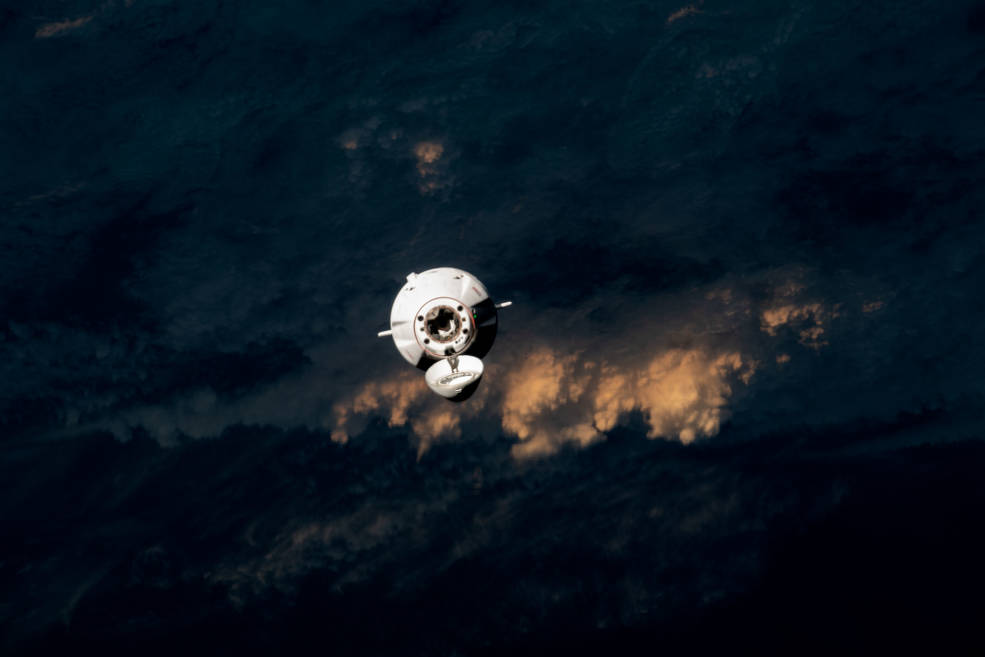
Ground controllers at SpaceX in Hawthorne, California, will command Dragon to undock from the space-facing port of the station’s Harmony module and fire its thrusters to move a safe distance away from the station. Undock is scheduled for 11:05 a.m.
After re-entering Earth’s atmosphere, the spacecraft will make a parachute-assisted splashdown about 1:30 a.m. June 30, off the coast of Florida. NASA will not broadcast the splashdown, but updates will be posted on the agency’s space station blog.
Dragon will carry back to Earth over 3,600 pounds of supplies and scientific experiments designed to take advantage of the space station’s microgravity environment. Splashing down off the coast of Florida enables quick transportation of the experiments to NASA’s Space Station Processing Facility at Kennedy Space Center, allowing researchers to collect data with minimal sample exposure to Earth’s gravity.
Scientific hardware and samples returning on the mission include the GRIP – Dexterous Manipulation in Microgravity chair used in the ESA (European Space Agency)-sponsored neurology experiments GRIP and GRASP (Gravitational References for Sensimotor Performance: Reaching and Grasping). GRIP studies how microgravity affects the manipulation of objects, while GRASP provides further insight into how the central nervous system adapts to the microgravity environment. The experiments have been on the space station almost six years, and the final in-orbit tests were completed in early 2023.
Samples from BioNutrients-2, Monoclonal Antibodies, and Myotones investigations also are returning to Earth for scientific analysis.
Dragon arrived at the station June 6 as SpaceX’s 28th Commercial Resupply Services mission for NASA, delivering more than 7,000 pounds of research investigations, crew supplies, and station hardware, including two IROSAs, or International Space Station Roll-Out Solar Arrays. The spacecraft was launched June 5 on a SpaceX Falcon 9 rocket from Launch Complex 39A at NASA Kennedy.
























